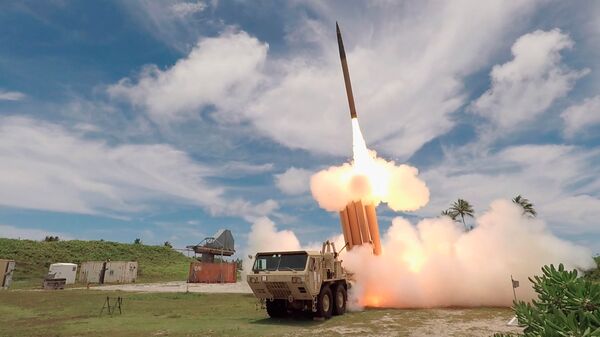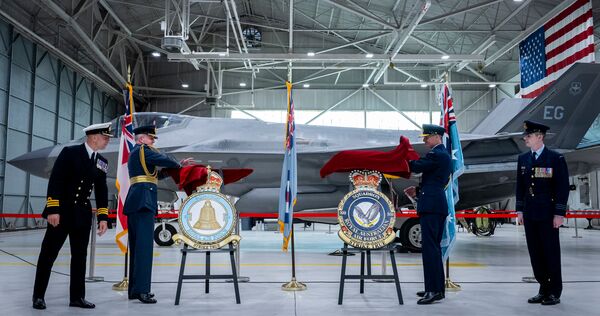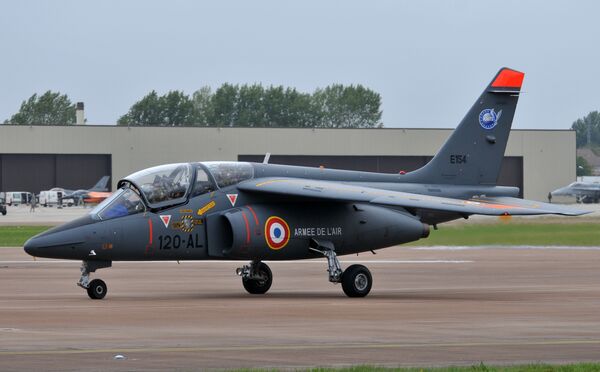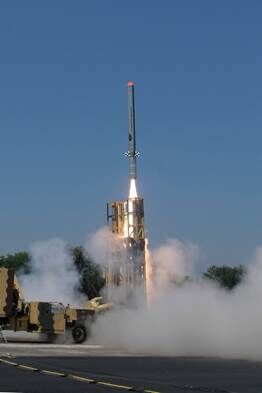- About
- Intara
- Capabilities
- Advisory
- Resources
- News
- Store
US, South Korea conduct THAAD remote launcher deployment training
27 March 2023
by Kapil Kajal


THAAD is a long-range, land-based theatre defence system. The easily transportable battery of weapons is designed to engage incoming tactical and theatre ballistic missiles out to 200 km and to intercept them as high as 150 km. The picture shows a THAAD interceptor launched from the Marshall Islands during a flight test in August 2019. (US Missile Defense Agency)
The US Forces Korea (USFK) and the Republic of Korea Army (RoKA)have conducted deployment training for the Terminal High Altitude Area Defense (THAAD) remote launcher.
According to a joint press release by the USFK and the RoKA, the THAAD remote launcher deployment training was conducted “for the first time”, as part of the bilateral South Korea-hosted Exercise ‘Freedom Shield', which concluded on 23 March.
The normalisation of the THAAD operations and capabilities provided the USFK readiness to ensure continued resourcing of the unit, as well as an opportunity to modify the defence design by exercising remote launch options, the RoKA said.
RAF, RAAF reform respective 80 Sqns as US-based F-35 data centres
18 April 2024
by Gareth Jennings


The chiefs of the RAF and RAAF reconstituting their respective 80 Squadrons during a joint ceremony at Eglin AFB in the US. (Crown Copyright)
The UK Royal Air Force (RAF) and the Royal Australian Air Force (RAAF) stood up their respective 80 Squadrons on 17 April to serve as US-based data units for the Lockheed Martin F-35 Lightning II Joint Strike Fighter (JSF).
Announced by the RAF, the two separate but linked squadrons were reconstituted during a joint ceremony at Eglin Air Force Base (AFB) in Florida.
“At the event, the [UK] Chief of the Air Staff, [Air Chief Marshal] Sir Richard Knighton, and [Australian] Chief of the Air Force Air Marshal Robert Chipman, formally awarded the dormant 80 Squadron number plates for each service to their respective teams within the Australia, Canada, and United Kingdom Reprogramming Laboratory [ACURL],” the RAF said.
France touts new modular trainer aircraft with Spain, UK
18 April 2024
by Gareth Jennings


With France having an approaching requirement to replace its Alpha Jets, the country has touted the possibility of a joint modular solution with Spain and the UK. (Janes/Patrick Allen)
France has raised the possibility of developing or acquiring a new modular advanced jet trainer aircraft with Spain and the United Kingdom.
Responding to a question in the National Assembly on 16 April, Minister of the Armed Forces Sébastien Lecornu said that, with France's Dassault/Dornier Alpha Jets nearing the end of their service lives, the country is considering a replacement tied to the future training requirements of its two European neighbours.
“Beyond 2032 … all solutions are conceivable and being studied, particularly with the United Kingdom and Spain,” the minister said, adding, “These solutions consist of developing or acquiring a modular aircraft that meets the needs of both [the Patrouille de France national aerobatic display team] and ‘Red Air', but also [other] aircraft, in the light of the [training requirement for the Future Combat Air System (FCAS)/Système de Combat Aérien du Futur (SCAF)] and its manned [aircraft component], the NGF [New Generation Fighter].”
DRDO test-fires ‘Indigenous Technology Cruise Missile'
18 April 2024
by Kapil Kajal


The ITCM (pictured above from its test on 18 April) is a technology demonstrator programme to validate the capability of small turbofan engines. (Indian Ministry of Defence)
India's state-owned Defence Research and Development Organisation (DRDO) test-fired its ‘Indigenous Technology Cruise Missile (ITCM)' from the Integrated Test Range (ITR) in Chandipur off the northeastern coast of Odisha, the Indian Ministry of Defence (MoD) said in a press release on 18 April.
“During the test, all subsystems performed as per expectation and the missile performance was monitored by several range sensors like radar, electro optical tracking system (EOTS), and telemetry deployed by [the] ITR at different locations to ensure complete coverage of the flightpath,” the MoD said.
The flight of the missile was also monitored from the Su-30-MKI aircraft of the Indian Air Force, the MoD added.
The missile followed the desired path using “waypoint navigation and demonstrated very-low-altitude sea-skimming flight”, according to the MoD.
“This successful flight test has also established the reliable performance of the indigenous propulsion system developed by the Gas Turbine Research Establishment (GTRE), Bengaluru,” the MoD said.
The US Forces Korea (USFK) and the Republic of Korea Army (RoKA)have conducted deployment training f...
Latest Podcasts
Iran Israel analysis
In this podcast Janes analysts discuss the Iranian attacks on Israel on the 14 April. They highlight the military systems used by Iran and the performance and impact of these on Israel. They also discuss the implications of this attack goi...
Listen nowJanes Case Studies
Using Janes Intara to build a common intelligence picture: Russian build up on the Ukrainian border
View Case StudyNews Categories
 Defence Details
Defence Details